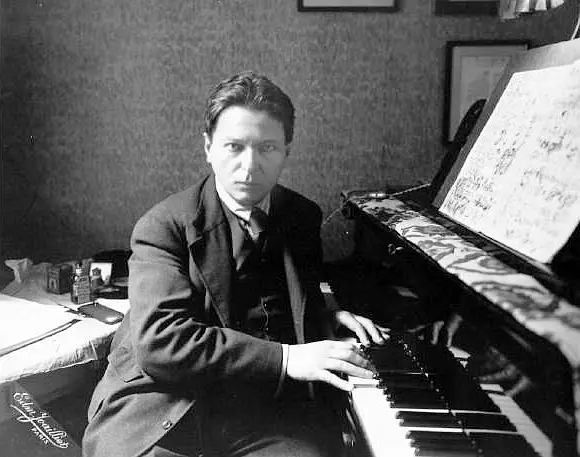
George Enescu (1881 – 1955)
George Enescu was a renowned Romanian composer, violinist, pianist, and conductor, celebrated for his profound influence on 20th-century music and his incorporation of Romanian folk elements into classical compositions.
Early Life and Musical Beginnings
George Enescu, born on August 19, 1881, in Liveni, Romania, was recognized as a child prodigy in music from an early age. He began his formal musical education at the age of seven at the Vienna Conservatory, where he studied violin under the tutelage of Joseph Hellmesberger Jr., among others. Enescu then continued his studies at the Paris Conservatoire, where he honed his skills in composition under Jules Massenet and Gabriel Fauré.
Career Highlights
Enescu emerged as a formidable violinist, composer, pianist, and conductor. He gained international recognition early in his career, performing in concerts across Europe and composing works that displayed his deep understanding of both Romanian folk music and Western classical traditions. Some of his most celebrated compositions include his Romanian Rhapsodies, the opera Oedipe, and his series of chamber works, including three symphonies.
Contribution to Education and Legacy
Enescu was also a dedicated teacher and mentor, influencing future generations of musicians. Notably, he was a teacher to the world-famous violinist Yehudi Menuhin, who often spoke of Enescu’s profound impact on his musical development. Enescu’s commitment to music education continued throughout his life, and he is remembered as a pivotal figure in Romanian cultural life.
Later Years
Despite his success, Enescu’s later years were marked by financial difficulties and declining health. He spent much of his time in Paris, where he continued to compose and perform, though he often returned to Romania. Enescu passed away on May 4, 1955, in Paris, leaving behind a legacy celebrated by both Romania and the international music community.
Impact on Flute Music
While George Enescu is primarily celebrated for his contributions to violin and orchestral music, his work also includes significant compositions that feature the flute. Notably, his “Cantabile et Presto” for flute and piano, composed for the Paris Conservatoire’s annual flute contest in 1904, has become a staple in the flute repertoire. This piece is particularly admired for its lyrical qualities and technical challenges, showcasing Enescu’s skill in composing for a variety of instruments.
Enescu’s ability to integrate the flute into larger orchestral works also demonstrates his understanding of its capabilities within an ensemble setting, contributing to the instrument’s evolving role in 20th-century classical music. Through his compositions, Enescu has influenced how the flute is perceived and utilized in classical music compositions, ensuring his impact extends beyond his primary instruments.
Birthday of George Enescu

